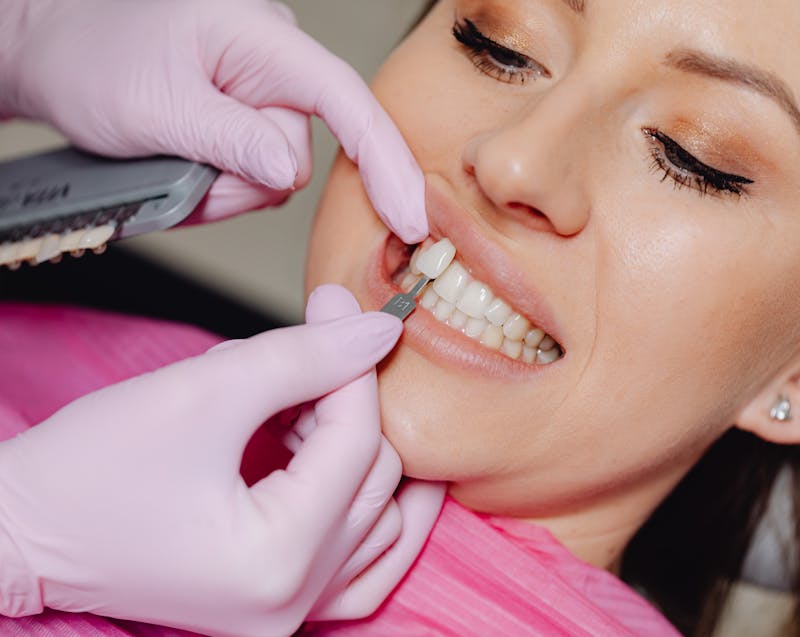
 There are currently a number of procedures that a skilled cosmetic dentist may use to highlight the beauty of your smile.
There are currently a number of procedures that a skilled cosmetic dentist may use to highlight the beauty of your smile.
Bleaching
For brightening of dingy or discolored teeth, bleaching could be the most effective remedy. Bleaching begins by taking an imprint of your teeth and creating a replica of them. On this replica, a delicate clear rack is designed, which is then packed with a bleaching serum and inserted right on top of your teeth. The bleach-filled rack may be worn for a number of hours throughout the day or in the evening while you’re asleep. Cumulative results will be observed each day. To achieve the optimum effect, the majority of people need to wear the bleaching rack for one or two weeks. In addition, the timing of these effects are affected by the various strengths of bleaching pastes that are available.
Bonding
If your teeth become cracked, chipped or corroded, synthetic composite resins which are bonded to your teeth with a light gun might be an ideal solution. First, your teeth are thoroughly cleaned and imprinted. Then a transparent glue is put on the area that needs to be bonded. After application of the glue, a white bonding substance is put on the tooth. It then permanently solidifies and fuses onto the tooth with a portable white light gun in a process known as photo curing. Bonding creates a natural-looking filling for modest cavities and cracked or chipped enamel, and may additionally be used to bridge gaps between your teeth. It can also be used to cover the whole exterior surface of a tooth to transform its color and appearance. In spite of its versatility, bonding does have its limitations. It might not be sturdy or aesthetic enough for specific individual circumstances. In these instances, the next step is usually porcelain veneers.
Porcelain Veneers
Sometimes the needs of cosmetic alterations of the teeth cannot be met with simple bonding, and that’s usually when porcelain laminate veneers are considered. Porcelain veneers (also known as laminates) may completely alter the appearance of your smile. Porcelain veneers are easy, pain-free and very noticeable remedies to cosmetic issues. They can transform the color, shape, size and placement of your teeth or any mixture of these elements. They may be provided as a substitution for orthodontic care. Porcelain veneers can be inserted over a couple of visits instead of all at once. The procedure involves first removing a very thin layer of the external tooth surface. An imprint is then obtained of the teeth and delivered to a dental laboratory, where a ceramist creates tiny porcelain laminates that contain the adjustments in size, color, shape and tooth placement that are necessary for an attractive smile. On your next visit, the laminates are permanently applied onto your teeth with a white light gun. The bonding substance works as a kind of glue or putty for the laminates. Porcelain veneers are typically the most favored procedure for remarkable smile reconstructions.
Porcelain Crowns
If laminates are not feasible due to a lack of available tooth structure, a more powerful refurbishment is necessary, and that usually means porcelain crowns. Pure porcelain crowns are inserted onto a completely prepared tooth and are considered to be the most natural-looking of all crown-related corrections. The procedure involves making a tooth imprint that is delivered to a dental laboratory where a porcelain crown is manufactured. These crowns are inserted into your mouth and permanently bonded onto your teeth. Sometimes pure porcelain crowns are not appropriate. If biting tension is too strong for pure porcelain crowns or there are large spaces between the teeth that need to be bridged, a metal alloy (whether gold or nickel or chromium) is required beneath the porcelain to give it durability.


